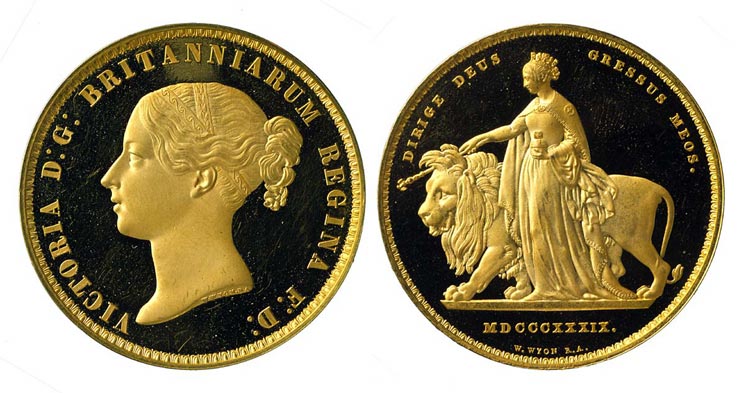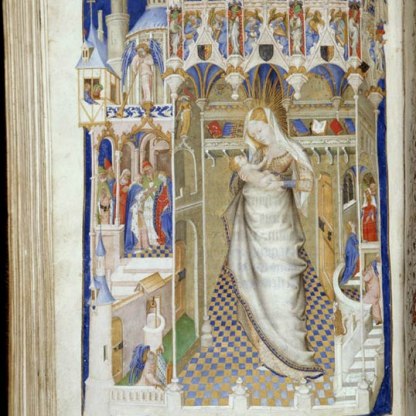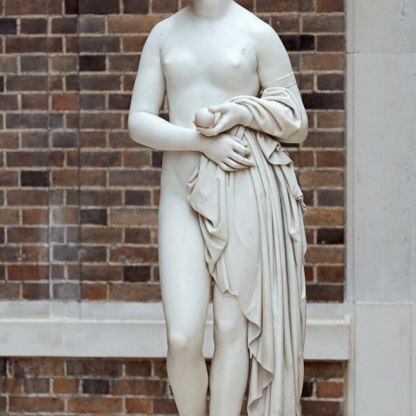£5 Coin of Queen Victoria, England, 1839

Guide thou my steps, O Lord.
Psalm 119, 133.
These words, in Latin, curve around the image on the reverse of this gold £5 coin, left. Beneath them we see the young Queen Victoria – she was twenty when this coin was designed – directing the steps of a large lion with her sceptre. In her left hand, she holds an orb topped with a crown. Beneath the ground line is the date in Roman numerals: 1839 – two years after Victoria's accession.
The queen is represented here as the character Una from The Faerie Queen, a poem written by the sixteenth-century English poet Edmund Spenser in praise of Queen Elizabeth I. In Book One, Spenser tells of the adventures of 'The Redcrosse Knight of Holinesse', St George – the patron saint of England – and the maiden Una (Latin for 'one'), who represents Truth, or the One True Religion. The couple become separated, and Una is left alone in a dark wood. A wild lion approaches her, but is tamed by Una's purity and beauty. An eighteenth-century painting by George Stubbs in the Fitzwilliam, left [PD.45-1971] shows his patroness Isabella Saltonstall in the guise of Una, being admired by the besotted big cat.
A beautifully executed profile bust of the young queen, left, adorns the other side of the coin. Given the popular conception of Victoria as an unamused, jowly figure dressed in widow's black, it is refreshing to see this attractive, soft-featured depiction of her in her youth. At the time, the portrait was praised as an excellent likeness, and was used on the official coinage of the British empire for over thirty years. The gold sovereign illustrated right was made in 1887, and shows a quite different, perhaps more familiar physiognomy.
Around the queen's head we read VICTORIA D:G: BRITANNIARUM REGINA F:D: – 'Victoria, Queen of the British [Isles]'. D:G stands for Dei Gratia ('By the Grace of God'), indicating the belief in the divine right of the British monarch, a title that goes back to the eighth century. F:D stands for Fidei Defensor ('Defender of the Faith'), a title that had originally been conferred upon Henry VIII in the sixteenth century by Pope Leo X, in gratitude for a book the king had written attacking Martin Luther.
Round the edge of the medal is a further Latin inscription: Decus et tutamen ('An ornament and a safeguard'). Until pound coins bearing the same words were introduced in England in 1983, this was the last English coin to use a Latin motto.
Wyon's signature at the bottom proudly includes the letters R.A. after his name: the year before designing this coin, he had been the first medallist to be elected to the Royal Academy in London. Designs based upon his portraits of Victoria were used on British postage stamps until the end of the queen's reign in 1901.
But although this work was highly praised in its time, Wyon's design was never actually issued as currency.
Themes and periods
Data from our collections database
Acquisition and important dates
- Method of acquisition: Bequeathed
- Dates: 1933-01
Dating
Maker(s)
- Æthelred I (865-71) Ruler
Materials used in production
Read more about this recordOther highlight objects you might like
Suggested Curating Cambridge products
Sign up to our emails
Be the first to hear about our news, exhibitions, events and more…





